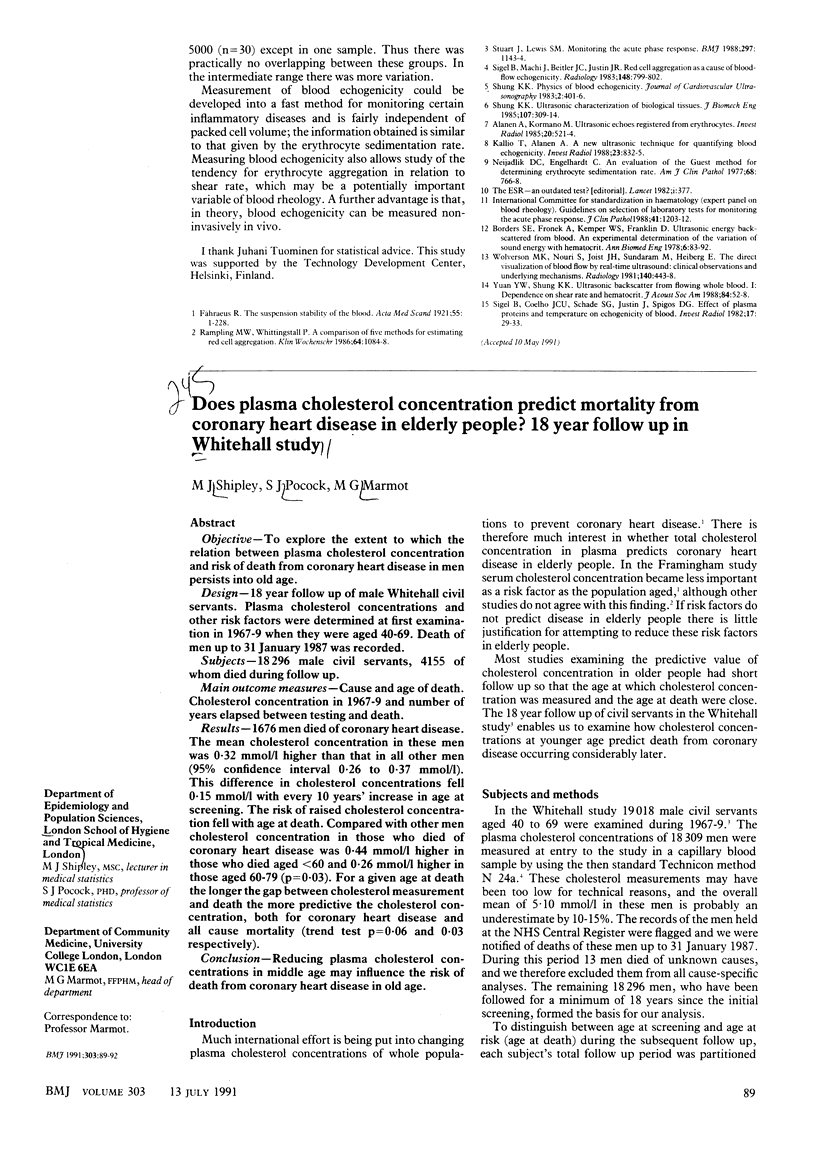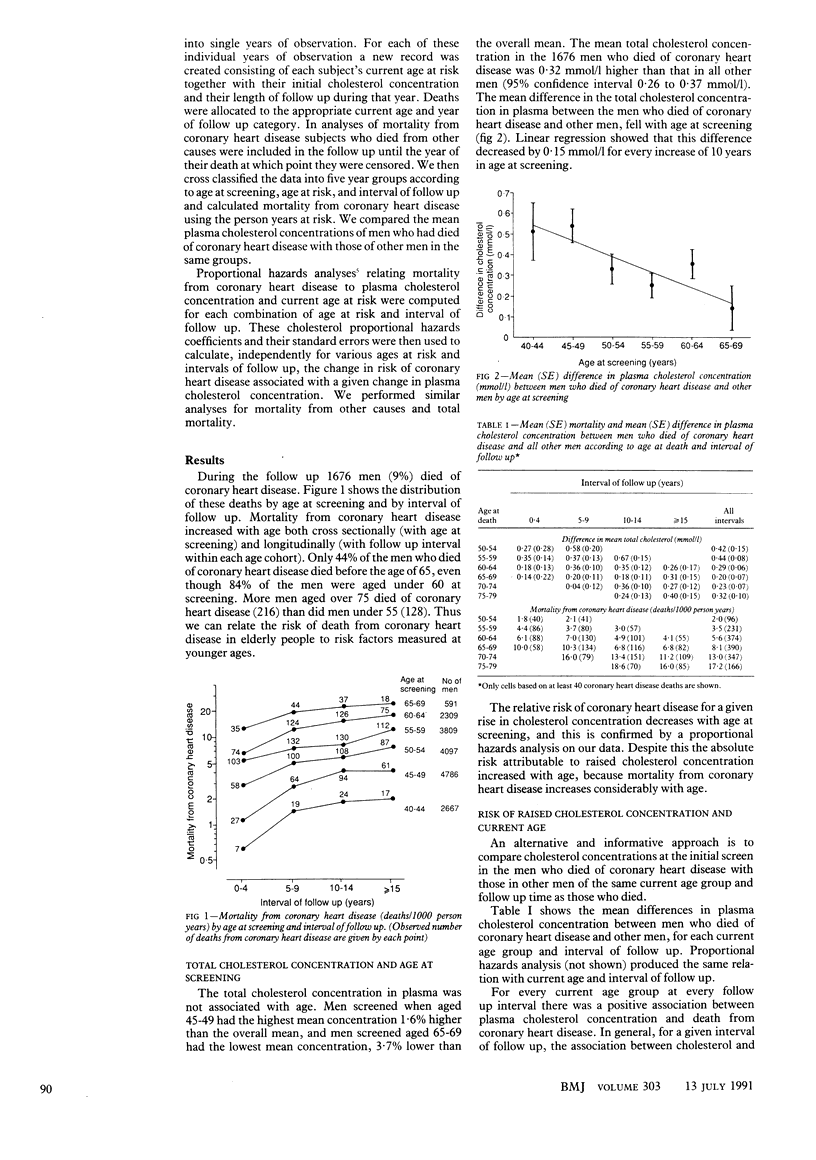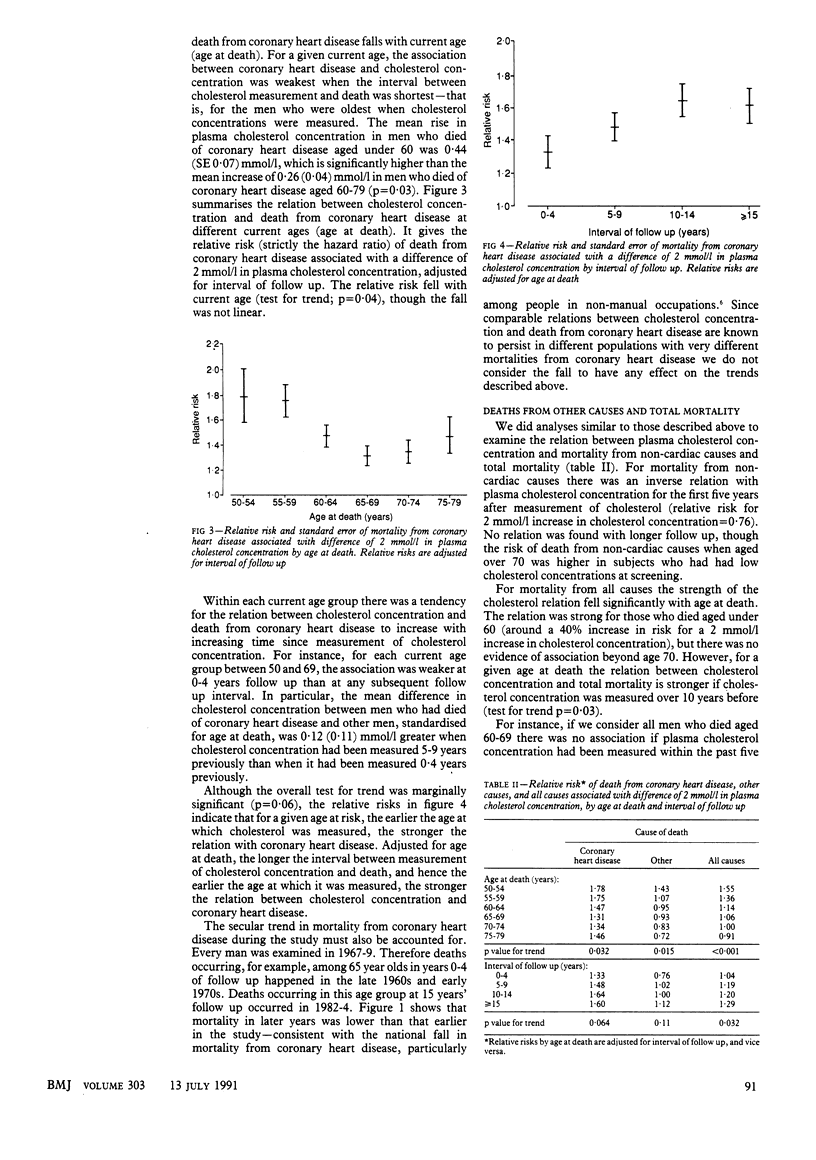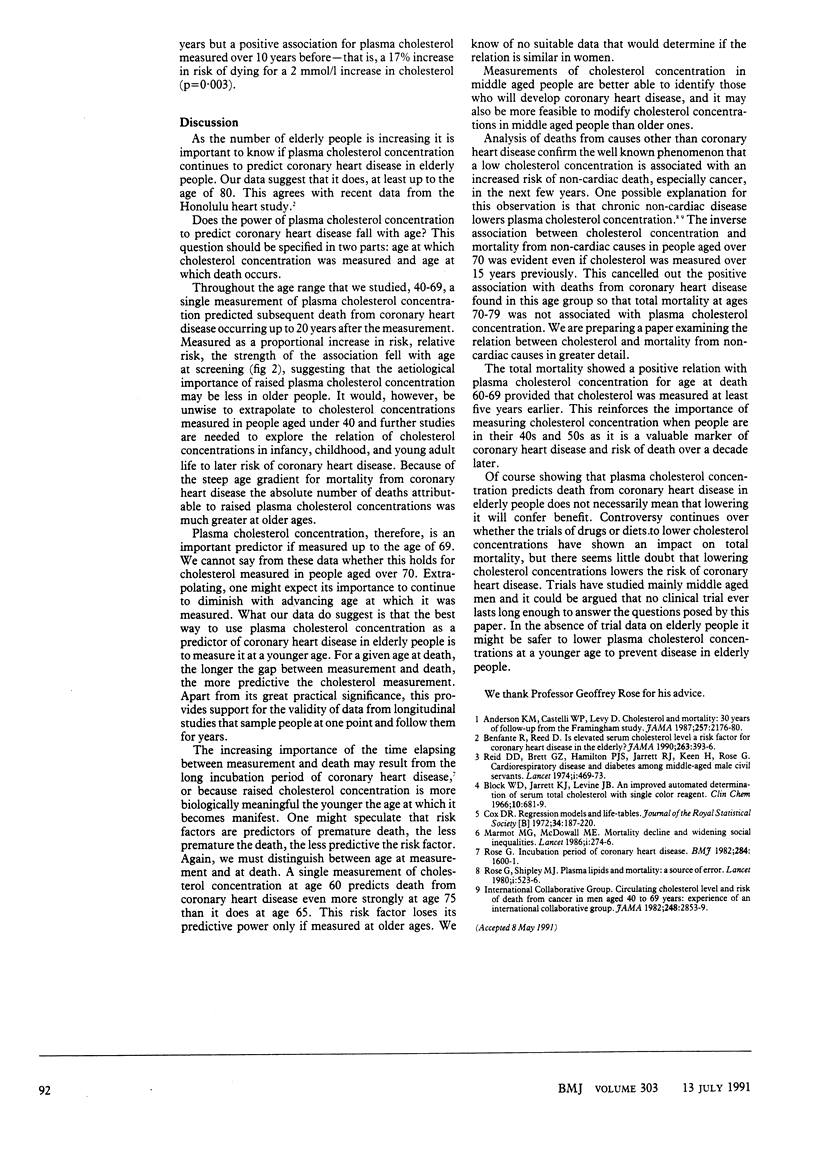Abstract
OBJECTIVE--To explore the extent to which the relation between plasma cholesterol concentration and risk of death from coronary heart disease in men persists into old age. DESIGN--18 year follow up of male Whitehall civil servants. Plasma cholesterol concentrations and other risk factors were determined at first examination in 1967-9 when they were aged 40-69. Death of men up to 31 January 1987 was recorded. SUBJECTS--18,296 male civil servants, 4155 of whom died during follow up. MAIN OUTCOME MEASURES--Cause and age of death. Cholesterol concentration in 1967-9 and number of years elapsed between testing and death. RESULTS--1676 men died of coronary heart disease. The mean cholesterol concentration in these men was 0.32 mmol/l higher than that in all other men (95% confidence interval 0.26 to 0.37 mmol/l). This difference in cholesterol concentrations fell 0.15 mmol/l with every 10 years' increase in age at screening. The risk of raised cholesterol concentration fell with age at death. Compared with other men cholesterol concentration in those who died of coronary heart disease was 0.44 mmol/l higher in those who died aged less than 60 and 0.26 mmol/l higher in those aged 60-79 (p = 0.03). For a given age at death the longer the gap between cholesterol measurement and death the more predictive the cholesterol concentration, both for coronary heart disease and all cause mortality (trend test p = 0.06 and 0.03 respectively). CONCLUSION--Reducing plasma cholesterol concentrations in middle age may influence the risk of death from coronary heart disease in old age.
Full text
PDF



Selected References
These references are in PubMed. This may not be the complete list of references from this article.
- Anderson K. M., Castelli W. P., Levy D. Cholesterol and mortality. 30 years of follow-up from the Framingham study. JAMA. 1987 Apr 24;257(16):2176–2180. doi: 10.1001/jama.257.16.2176. [DOI] [PubMed] [Google Scholar]
- Benfante R., Reed D. Is elevated serum cholesterol level a risk factor for coronary heart disease in the elderly? JAMA. 1990 Jan 19;263(3):393–396. [PubMed] [Google Scholar]
- Marmot M. G., McDowall M. E. Mortality decline and widening social inequalities. Lancet. 1986 Aug 2;2(8501):274–276. doi: 10.1016/s0140-6736(86)92085-4. [DOI] [PubMed] [Google Scholar]
- Reid D. D., Brett G. Z., Hamilton P. J., Jarrett R. J., Keen H., Rose G. Cardiorespiratory disease and diabetes among middle-aged male Civil Servants. A study of screening and intervention. Lancet. 1974 Mar 23;1(7856):469–473. doi: 10.1016/s0140-6736(74)92783-4. [DOI] [PubMed] [Google Scholar]
- Rose G., Shipley M. J. Plasma lipids and mortality: a source of error. Lancet. 1980 Mar 8;1(8167):523–526. doi: 10.1016/s0140-6736(80)92775-0. [DOI] [PubMed] [Google Scholar]


